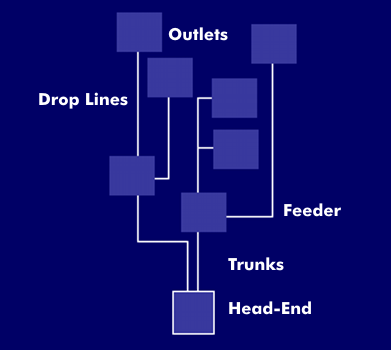tree topology
The tree topology is characterized by a central station, the head-end station, forming the tree root, from which one or more main strands, the trunks, originate. From the trunks, the "branches" branch out as feeders, called feeders, from which it goes via the "branches", which are the drop lines, to the "leaves", which form the outlets and thus the connection points for the user equipment.
The tree topology is particularly popular in information transmission because of the structural equivalence of its parts and the recursiveness of the overall structure, e.g., for organizing large discrete amounts of information. In communication technology, there are logical tree structures based on the spanning tree, as well as physical ones. Earlier broadband networks had a tree topology because a central converter/ amplifier, the head-end station, could be placed at the root. Modular modern networks, based on structured cabling with a hub hierarchy, also have a tree structure.
The tree structure is well suited for wide- area cabling and for networks in multi-story buildings, such as community antenna systems or cable television. Tree topologies are used for broadband networks according to IEEE 802.4 and for city networks( MAN) according to IEEE 802.6.

